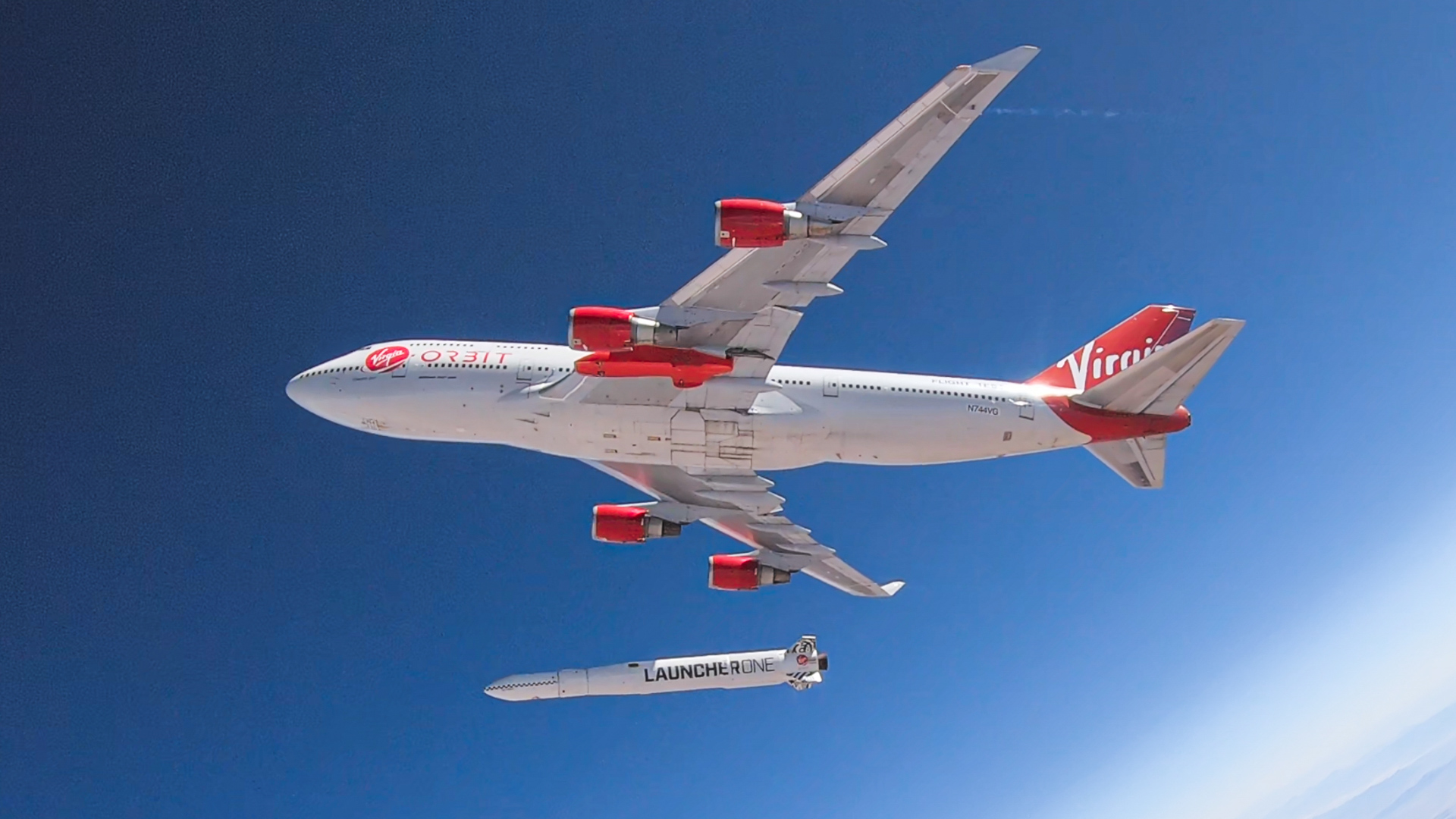

Aerospace, as an industry, is composed of both atmosphere-going planes and orbit-bound rockets, which thanks to the principles of flight have more overlap than most would expect. The two disciplines rarely gets this blurred, however, as Virgin Orbit has announced it’s building a fleet of Boeing 747s with rocket-carrying pods to get small satellites to orbit. The company previously had one 747-400 (known as Cosmic Girl) that has flown four missions, but the decision to customize more airframes was driven by a need to launch even more satellites, according to CNBC.
The Virgin Orbit launch planes solve a variety of problems that plague the space industry: spaceports are uncommon, expensive, and require massive amounts of infrastructure. Working from a single fixed location for launch can make getting a satellite to a certain orbital inclination very difficult, and launches can easily be delayed by bad weather. On top of all of this, they can be easily observed by anyone with access to a terrestrial-aimed photographic satellite, which is a problem for sensitive launches undertaken by spy agencies.
Virgin bypasses all of these issues by strapping a two-stage rocket to the wing of a 747 and launching the rocket off the plane itself mid-flight at around 35,000 feet, well above the clouds, and from nearly anywhere on Earth. In an interview with CNBC, Virgin Orbit CEO Dan Hart said it best: “The ability to deploy two rockets and all the ground equipment in one airplane, fly somewhere, set it up, and all of a sudden you’ve got a launch base somewhere is pretty unique… it adds a certain level of unpredictability for the national security community [and] it’s better economics for spaceports.”
The planes Virgin uses, Boeing 747s, are a natural choice for rocket launches for a variety of reasons. They’re long-ranged with the ability to fly over 8,000 miles at a time, they have a staggering 875,000-pound maximum takeoff weight, and they can fly up to an operational ceiling of 45,000 feet. Additionally, the 747 already had an extra mounting point built into its airframe from the factory, with the original intent of carrying an extra (non-operational) engine as air cargo without needing to commission a separate flight, as seen in the vintage photo of the Korean Air Lines 747 above.



Final image of the rocket-carrying Cosmic Girl via Glenn Beltz, used under CC-BY 2.0
Virgin simply repurposed that carrying mount as a rocket-launching pod and developed a specialized two-stage rocket, known as LauncherOne, specifically for 747-based launches. The company’s existing 747-400 launch vehicle was a former Virgin Atlantic passenger jet that was transferred to Virgin Orbit in 2015 and modified for launch duties, whereas the new planes will be obtained and modified by L3Harris Technologies, a large defense contractor. Virgin Orbit expects to have at least one of the two 747s in its hands next year. Given that the company already has five more launches planned for this year and has had one successful launch in 2022, that plane looks like it’ll be leading quite a busy life.
Got a tip or question for the author? Contact her directly: victoria.scott@thedrive.com
